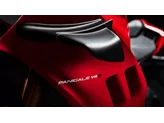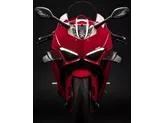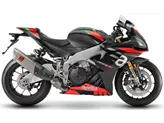Ducati Panigale V4 2018 vs. Yamaha R1 2018

Ducati Panigale V4 2018

Yamaha R1 2018
Overview - Ducati Panigale V4 2018 vs Yamaha R1 2018
The Ducati Panigale V4 2018 and the Yamaha R1 2018 are both high-performance supersport motorcycles that offer thrilling riding experiences. However, there are some notable differences between the two models.
In terms of engine specifications, the Ducati Panigale V4 2018 is equipped with a 1103cc V4 engine that produces 214 horsepower and 124 Nm of torque. On the other hand, the Yamaha R1 2018 features a 998cc inline-four engine that delivers 200 horsepower and 112.4 Nm of torque. Both bikes have four cylinders and four valves per cylinder, but the Ducati utilizes a desmodromic valve system while the Yamaha uses a DOHC system.
In terms of chassis and suspension, both motorcycles feature aluminum frames and upside-down telescopic forks in the front. However, the Ducati Panigale V4 2018 has a monocoque frame design, which provides excellent rigidity and stability. On the other hand, the Yamaha R1 2018 utilizes a Deltabox frame, which is known for its lightweight and nimble handling characteristics.

Ducati Panigale V4 2018
When it comes to braking, both bikes are equipped with double disk brakes in the front. The Ducati Panigale V4 2018 features advanced rider assistance systems such as ABS, while the Yamaha R1 2018 goes a step further with additional features like launch control and traction control.
In terms of dimensions and weights, the Yamaha R1 2018 has a slightly shorter wheelbase of 1405mm compared to the Ducati Panigale V4 2018's 1469mm. The seat height of the Yamaha R1 2018 is also slightly higher at 855mm compared to the Ducati Panigale V4 2018's 830mm. Both motorcycles have similar front and rear tire dimensions, with the Yamaha R1 2018 having a slightly narrower rear tire width of 190mm compared to the Ducati Panigale V4 2018's 200mm. The Yamaha R1 2018 also has a larger fuel tank capacity of 17 liters compared to the Ducati Panigale V4 2018's 16 liters.

Yamaha R1 2018
In terms of strengths, the Ducati Panigale V4 2018 is praised for its powerful engine with great manners and a pleasant upper body position. It also offers good wind protection and a powerful but not intrusive sound. On the other hand, the Yamaha R1 2018 is known for its very rev-happy engine, great sound, and terrific handling. It also offers high-quality electronic equipment and components manufactured using modern methods.
In terms of weaknesses, the Ducati Panigale V4 2018 is noted for its seat getting warm in city traffic and a slightly rough engine/clutch feel in tight hairpin bends. The Yamaha R1 2018, on the other hand, requires an agile driving style and may not be as comfortable for relaxed cruising.
In conclusion, both the Ducati Panigale V4 2018 and the Yamaha R1 2018 are exceptional supersport motorcycles with their own unique strengths and weaknesses. The Ducati offers a powerful and charismatic engine, while the Yamaha provides a rev-happy engine and excellent handling. Ultimately, the choice between the two will depend on the rider's preferences and riding style.
Technical Specifications Ducati Panigale V4 2018 compared to Yamaha R1 2018
Pros and Cons in comparison
Pros and Cons in comparison
Ducati Panigale V4 2018

The Panigale has become much more accessible in the 2018 V4 version than before. The engine, in combination with the electronics package, is still not as flawless and sterile as an inline four, but in practice it is a real blessing for Ducatisti - and a positive surprise for riders of other brands. The Panigale V4 also surprised with tolerable riding comfort on the country road and a pleasant level of stability. Progress here was clearly in the right direction. The new V4 is stronger and faster but also easier and more pleasant to ride.
Yamaha R1 2018

The Yamaha YZF-R1 is closer to a racing machine than ever before. The engine shines with lightness and agility. The seating position surprises positively and the handling is radical but still "suitable for the masses". The machine immediately stands out visually and also due to the heart-warming sound and is now 20 years after the first R1 the biggest milestone in R1 history.
Price Comparison Avarage Market Price Ducati Panigale V4 vs Yamaha R1
There are a few key differences between a Ducati Panigale V4 2018 and a Yamaha R1 2018. There are the same number of bikes of both models available on the 1000PS.de marketplace, specifically 5. It takes less time to sell a Yamaha R1 with 52 days compared to 91 days for the Ducati Panigale V4. Since model year 2018 1000PS.de editors have written 18 reviews for the Ducati Panigale V4 and 80 reviews for the Yamaha R1 since model year 2005. The first review for the Ducati Panigale V4 was published on 05/11/2017 and now has more than 131,500 views. This compares to more than 3,900 views for the first review on Yamaha R1 published on 28/04/2003.
























